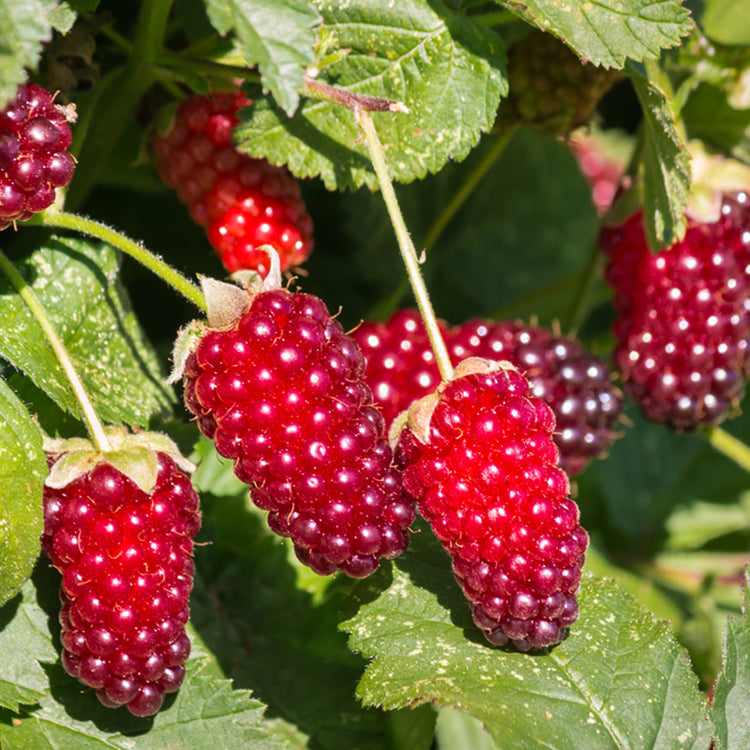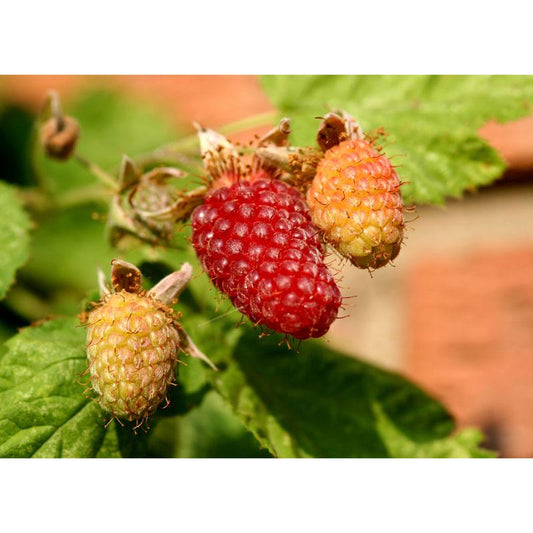
Loganberries: A Delicious Hybrid Berry
Loganberries, a delightful hybrid berry, have captured berry enthusiasts' hearts and taste buds for decades. This unique fruit is a cross between raspberries and blackberries, offering a distinct flavor and a range of culinary possibilities. In this informative article, we will explore the characteristics, cultivation, and culinary uses of loganberries.
Characteristics of Loganberries
Loganberries are easily distinguishable from their parent berries due to their distinctive appearance and flavor profile:
-
Appearance: When ripe, loganberries are larger and longer than raspberries, with a deep red to purplish-black color. Their shape is elongated and slightly conical, resembling a stretched-out raspberry.
-
Flavor: The flavor of loganberries combines the tartness of raspberries with the sweetness of blackberries. They offer a unique balance of sweet and tangy notes that make them a versatile ingredient in both sweet and savory dishes.
-
Texture: Loganberries have a smooth, juicy texture that is less seedy than blackberries, making them a pleasant addition to jams, pies, and other desserts.
Cultivation of Loganberries
Loganberries are relatively easy to cultivate, making them an excellent addition to home gardens or commercial berry farms. Here are some key factors to consider when growing loganberries:
-
Climate and Soil: Loganberries thrive in temperate climates with well-drained soil. They prefer full sun but can tolerate partial shade. Supporting their trailing vines, such as trellises or wires, is important to prevent them from sprawling on the ground.
-
Planting: Loganberry plants can be grown from cuttings or purchased as bare-root plants. They should be spaced about 4 to 6 feet apart to allow for proper air circulation and room to spread.
-
Pruning: Pruning is essential to maintain healthy loganberry plants. Pruning in late winter or early spring is recommended to remove dead or diseased canes and encourage new growth. This practice also makes harvesting easier.
-
Watering: Loganberries require regular watering, especially during dry periods. A consistent supply of moisture is crucial for fruit development and overall plant health.
-
Harvesting: Loganberries are typically ready for harvest in the summer months, usually from late June to early July. Ripe berries are easily plucked from the vine and should be picked as they turn a deep red or purplish-black color.
Culinary Uses of Loganberries
Loganberries are incredibly versatile in the kitchen, and their unique flavor adds a special touch to a variety of dishes:
-
Fresh Consumption: Loganberries can be enjoyed fresh as a delicious snack or added to fruit salads for an extra burst of flavor.
-
Preserves and Jams: The natural tartness of loganberries makes them an excellent choice for making preserves and jams. Their rich color and unique flavor add depth to spreads.
-
Baking: Loganberries are a fantastic addition to pies, tarts, and cobblers. They can be used alone or combined with other berries for a delightful dessert.
-
Beverages: Loganberries can be used to make refreshing fruit syrups for cocktails, mocktails, or homemade sodas.
-
Sauces: The sweet and tangy profile of loganberries makes them great for creating sauces to accompany meats or desserts.
Loganberries are a delightful hybrid berry with a unique flavor and a wide range of culinary applications. Whether you grow them in your backyard or purchase them at a local market, these berries are sure to become a favorite ingredient in your kitchen. Their ease of cultivation and versatile flavor make loganberries a delicious addition to any garden and a delightful treat for your taste buds.
For more information, please see our berry growing guide.
 Sold out
Sold out
